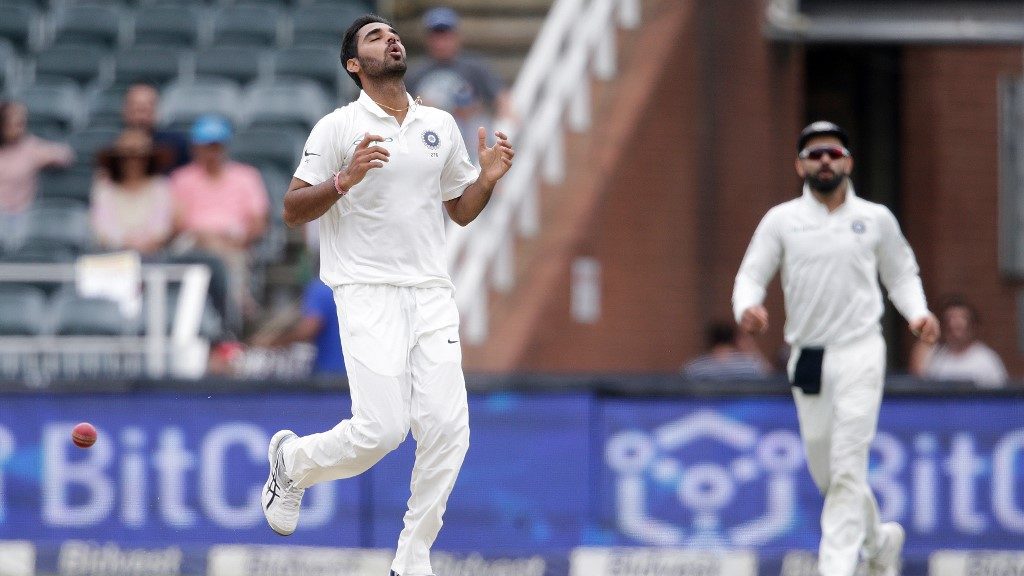How India can learn a thing or two from Australia’s rotation policy

Apart from Steve Smith’s heroism, a key takeaway from the Ashes this year was Australia’s player management. Before the series, coach Justin Langer made it crystal-clear that only the best three or four pacers would play every Test. Langer further clarified this isn’t a ‘rotation’ policy per se. It’s a well-thought strategy they had implemented earlier in the World Cup. While the policy may have its fair share of flaws, it was one of the catalysts that helped Australia retain the Ashes in England after 17 years. With the injured Jasprit Bumrah out of the South Africa Test series, it is perhaps time for India to look at the way Australia manage their pace battery.
How Australia used bowling rotation effectively
Ahead of the Ashes, Langer & co. built a pool of top-notch quicks so deep that even the World Cup’s highest wicket-taker Mitchell Starc featured directly in the fourth Test. It was the only Test he played in the series. Except for Pat Cummins who played all five, Australia kept rotating the others. The criteria to determine their opening pace attack was based on three things – recent form, fitness and conditions. It was James Pattinson’s Sheffield Shield performance that led to his inclusion in the first Test. It was Peter Siddle’s relative fitness and county stints that gave him the nod ahead of Starc and Josh Hazlewood. From there on, it was purely ongoing form and conditions. Even if Cummins were to break down mid-series, a like-for-like replacement was ready.
[table id=7 /]
India can take a leaf out of Australia’s book
Since Bumrah’s Test debut in January 2018, India have played 17 Tests. Bumrah has featured in 12 of those. Ishant Sharma has played 13, while a fit-again Mohammed Shami has played 15. The other two aren’t all-format bowlers but Bumrah is India’s trump card across formats. He also plays more matches in the Indian Premier League (IPL) than the rest. No doubt, India have been resting Bumrah regularly. He didn’t play two of the five Tests in England and skipped home Tests against Afghanistan and the West Indies. He was also recently excluded from India’s limited-overs fixtures in the Caribbean.
It is time the Indian team management adopts a more long-term approach that focuses on building a solid bowling bench. To an extent, they have rotated their frontline pacers well in limited-overs. The same strategy should now be applied in the longer format, where chances of breakdowns are higher. Umesh Yadav has been fantastic in home conditions thanks to his rigorous years on Vidarbha’s flat decks. But his inconsistency on foreign pitches hasn’t helped his cause on away tours. With the ICC World Test Championship at stake, coach Ravi Shastri and captain Virat Kohli will have their task cut out in the next few months.
Grooming younger bowlers parallelly
For India to nurture their current world-class pace attack, it is imperative that the Ishant-Shami-Bumrah trio is rotated in an alternate fashion. Especially Bumrah, who at 25 is already India’s spearhead in the shorter formats. He has also just sustained his first major injury in international cricket. At the same time, they need to start diving deeper into India’s domestic talent hub that is now generating more quicks than ever. Upcoming bowlers such as Navdeep Saini, Khaleel Ahmed and an experienced Bhuvneshwar Kumar can be potential backups to even a fully-fit pace unit.
Bhuvneshwar last played a Test for India in January 2018, which also marked Bumrah’s debut. Despite returning with 10 wickets in two Tests in South Africa, he didn’t play a single Test thereafter. It could be argued that his style is more helpful in swinging conditions, which explains why Kohli shockingly left him out of the Australia Tests.
The curious case of Bhuvneshwar Kumar
Let’s take a look at Bhuvneshwar’s record at home – 27 wickets in 11 Test matches with a striking average of 26.22 and a neat economy of 3.01. Only Ishant has a better economy among the rest. Since Bhuvi’s Test debut in 2013, India haven’t looked beyond Ishant, Shami, Bumrah, Bhuvi, Umesh and a fading Zaheer Khan. The next name in the list of fast bowlers to have played in that duration is that of Varun Aaron – 2 wickets in 2 matches. Shardul Thakur, Mumbai’s premier fast bowler played a solitary Test last year but limped off after bowling 1.4 overs. He never returned.

An important factor that has gone against Bhuvneshwar’s Test selection is his see-saw fitness. In 2018, he missed the entire Test series in England due to an injury he picked up during the ODIs. But since then, Kumar has reincarnated into a fitter, faster and better version of himself. With Bumrah leading the limited-overs pace attack, Kumar has played the perfect partner and maintained his white-ball expertise. Thanks to the extra pace and a spot-on knuckle ball, he has only added more feathers to his cap. Even with Bhuvi on the bench, he’ll be a worthy influence on young fast bowlers aiming to make their mark on the big stage.
Over the next five months, India are slated to play seven Tests against three different opponents at home and away. Their limited-overs calendar is busier, with 12 ODIs and 14 T20Is leading up to the World T20. With experiments already happening on the ODI and T20I front, now would be a good time to enrich India’s fast bowling bank in Tests.
